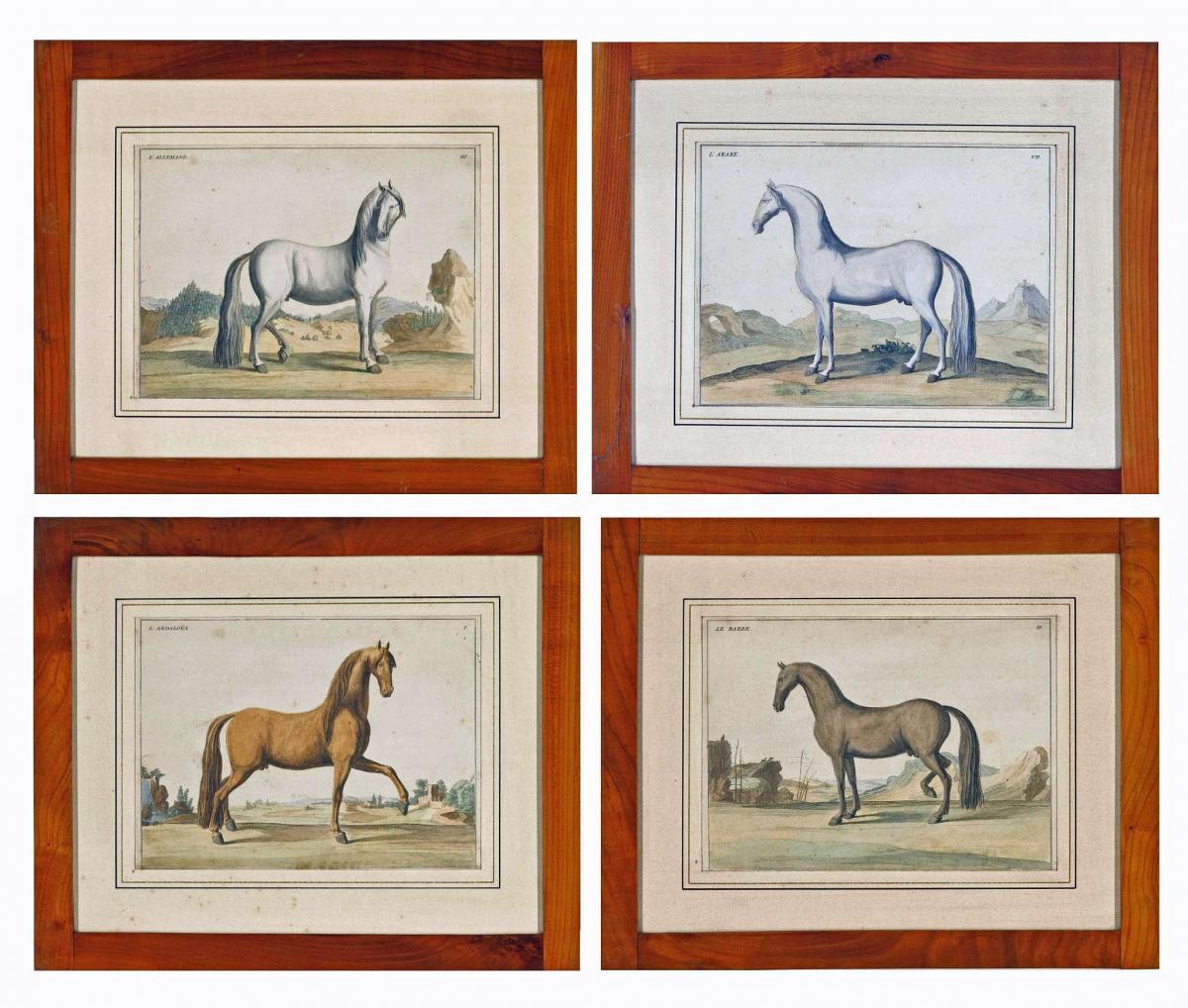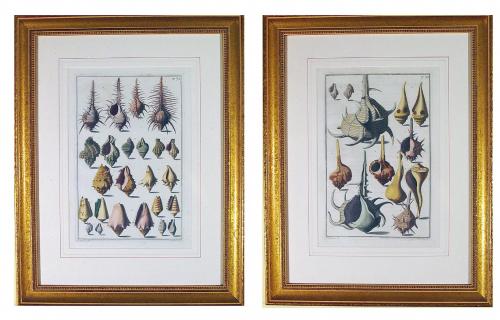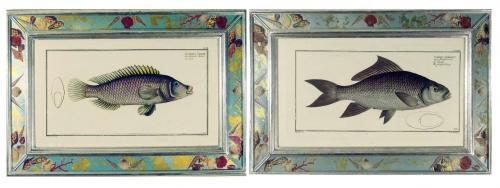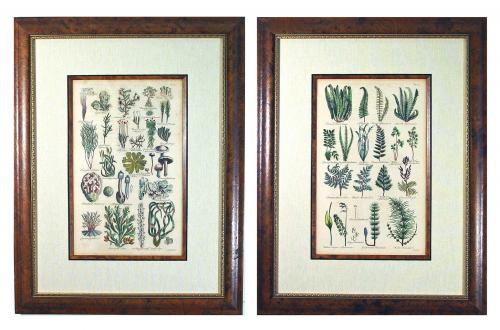

Price on application
This object is eligible for a Certificate of BADA Provenance
The BADA Standard
- Since 1918, BADA has been the leading association for the antiques and fine art trade
- Members are elected for their knowledge, integrity and quality of stock
- Our clients are protected by BADA’s code of conduct
- Our dealers’ membership is reviewed and renewed annually
- Bada.org is a non-profit site: clients deal directly with members and they pay no hidden fees
Handcoloured Prints of Horses from L'art de monter a cheval: ou Description du manége moderne, dans sa perfection by Baron D'Eisenberg.
Published in 1747.
Paper.
Each of the four prints is mounted in a cherrywood parcel-gilt frame, with a glazed reverse depicting the corresponding text sheet and can be sold as pairs.
The following subjects are depicted:
1. L'Andaloux, Le Cheval d'Espagne, Plate I;
2. Le Barbe, Le Cheval Barbe, Plate II,
3. L'Allemand, Le Cheval d'Allemagne, Plate III;
4. L'Arabe, Le Cheval Arabe, Plate VII.
Reference: These prints were originally part of an illustrated book Baron d'Eisenberg made describing the art of the cavaliers and depicting the different breeds of horses-L'art de monter a cheval: ou Description du manége moderne, dans sa perfection.
The author, a German horseman and artist, spent some of his youth at the manège of Saxe-Weimar before entering into the service of the Emperor. He then spent six years in Naples as the Master of Horse of the Viceroy before returning to Vienna where he studied under M. de Regenthal, the imperial Master of Horse.
He participated in the coronation of the Emperor Charles V at Frankfurt in 1711, then spent some time in England but was back in Germany before 1753. He probably died in Tuscany where he was Director and Master of the Horse at the Academy in Pisa. Brunet II, 957; Mennessier de la Lance I, p. 438.
Friedrich Wilhelm, Baron Rais d'Eisenberg (ca. 1700-ca. 1770) belonged to the aristocracy of the Holy Empire and was one of the most famous horse-lovers of his time. He was raised among horses, and worked first at the court of Saxen-Weimar, then as an equerry in Naples, for the vice king.
Later he also worked in Vienna - in the famous Spanish Riding School -, England and Tuscany. The Baron wrote several important and lavishly illustrated books on horses: his Description du manège moderne dans sa perfection, London 1727, and Dictionniare des termes du manège moderne, 1747, being the best well-known.
Baron D'Eisenberg wrote and illustrated a fascinating book giving a full description of horsemanship which he dedicated to King George II and to his son, His Royal Highness the Prince of Wales. In it he undertook to illustrate and describe the art of training cavaliers and their horses, and subscribers to the book included royalty and nobility from all over Europe.
The engraver of these fine plates was Bernard Picart, born in Paris in 1673, who gained honours and the Academy of Paris at the age of sixteen. He was a master designer and engraver and worked in Paris and Amsterdam until his death in 1733.
(http://www.hoofprintstudio.com/store/dressage.php)
Dimensions
Frame: 15 1/2 inches high x 19 inches wide; Sight 8 1/2 inches x 11 3/4 inches.Stock number
NY07211BThe BADA Standard
- Since 1918, BADA has been the leading association for the antiques and fine art trade
- Members are elected for their knowledge, integrity and quality of stock
- Our clients are protected by BADA’s code of conduct
- Our dealers’ membership is reviewed and renewed annually
- Bada.org is a non-profit site: clients deal directly with members and they pay no hidden fees




